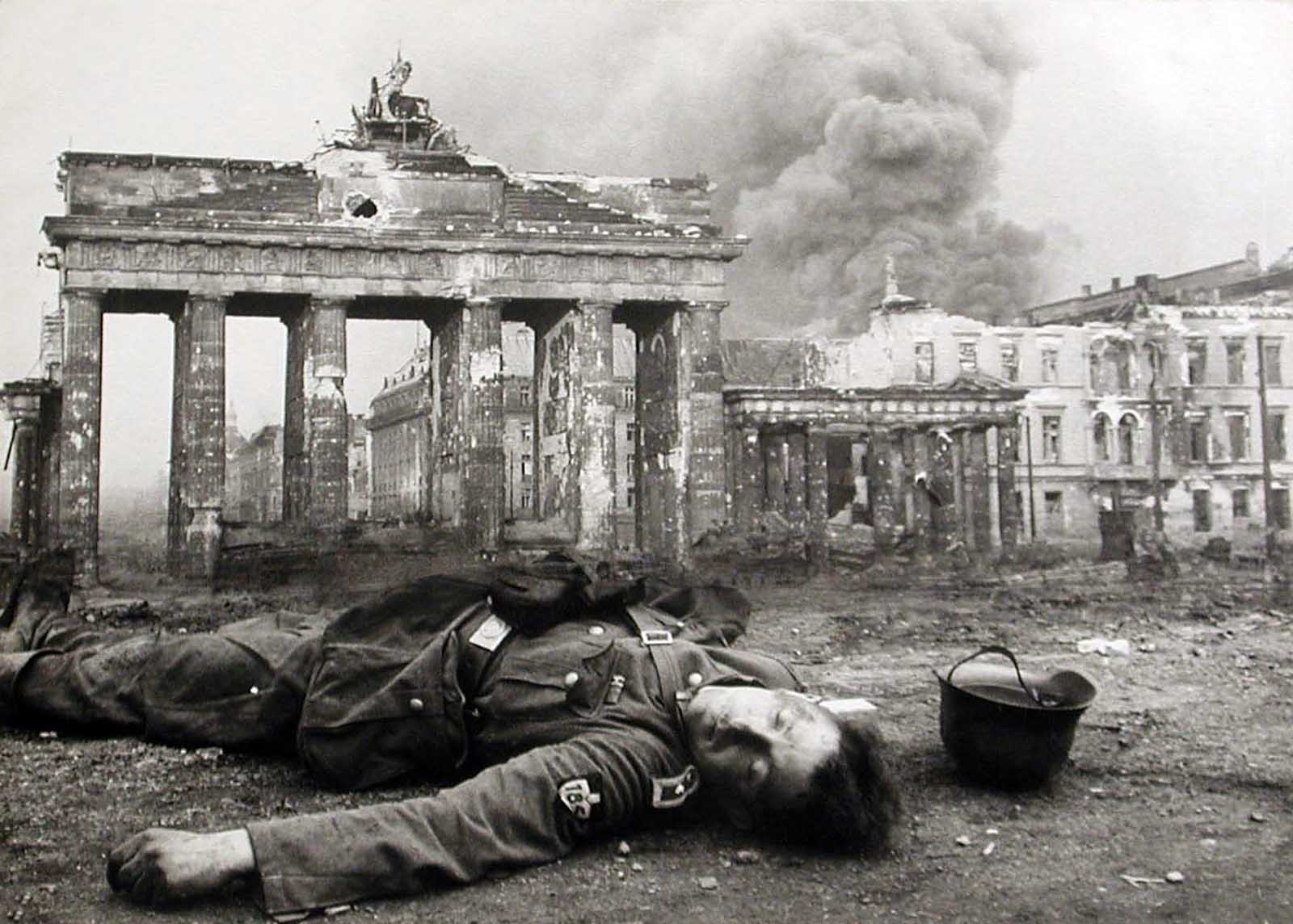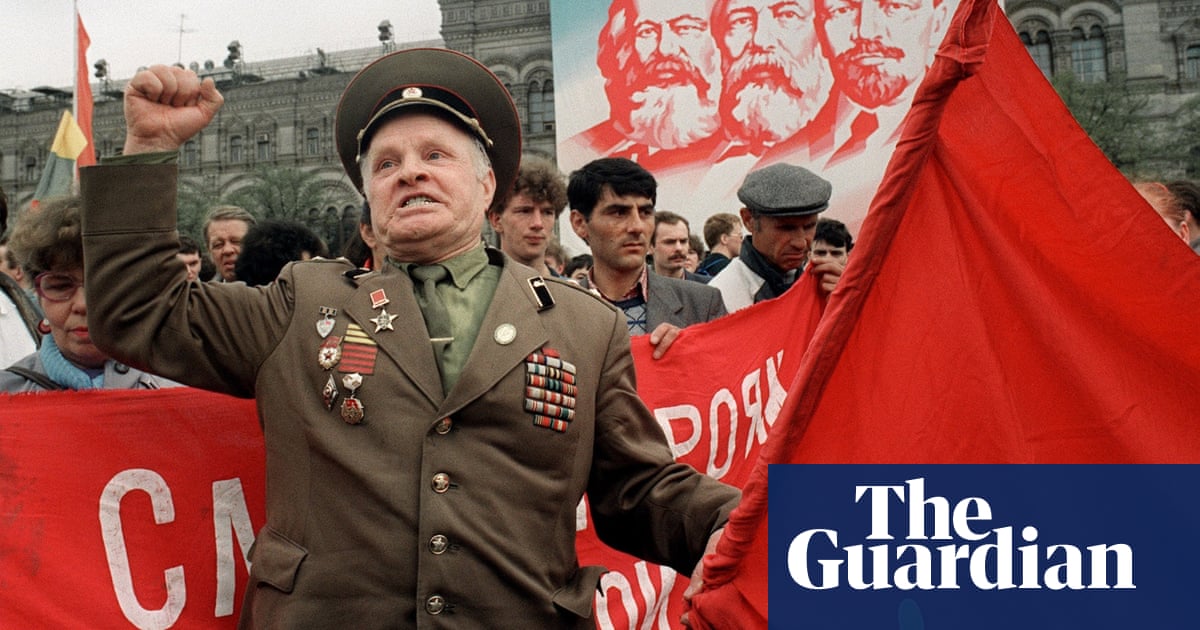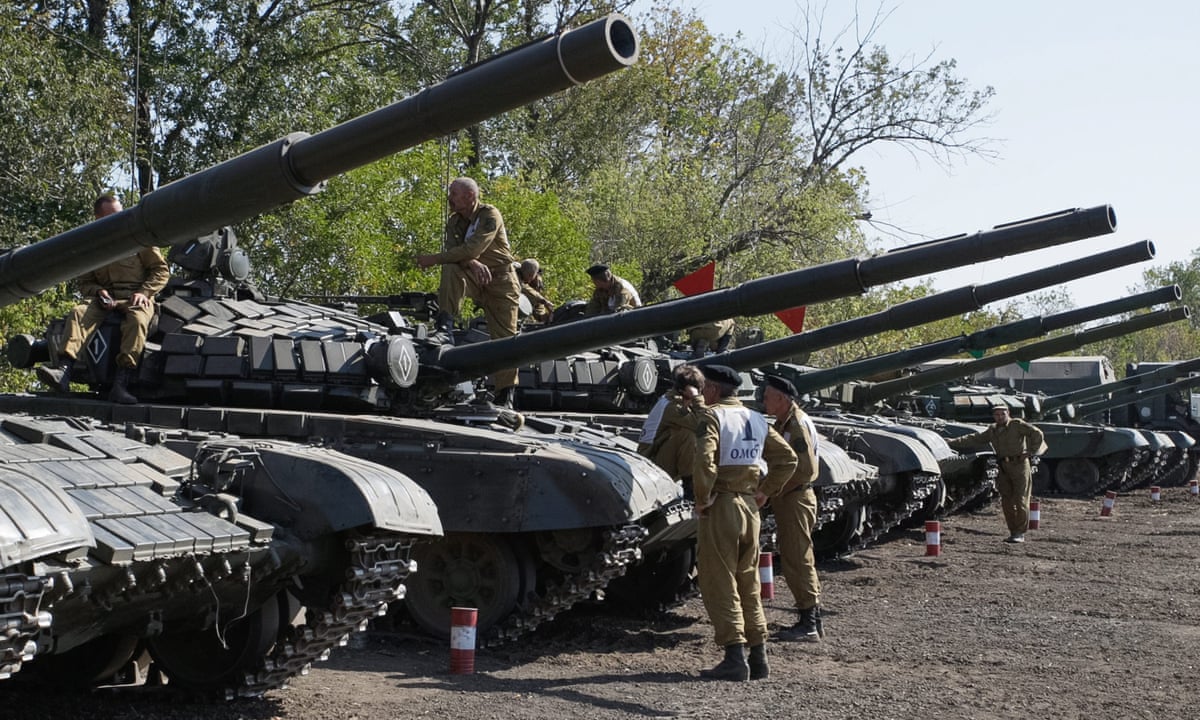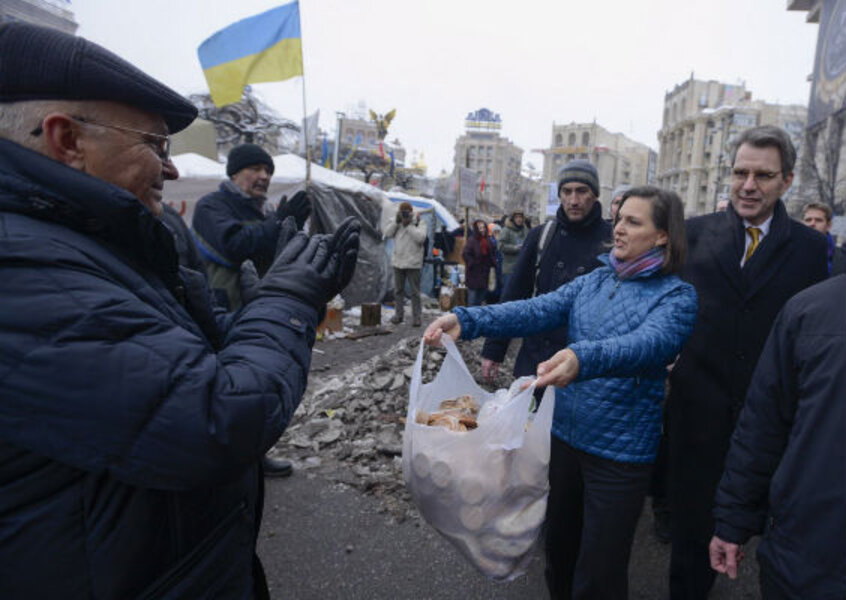
February 2024:
10th Anniversary of the Conflict in Ukraine
Samir Saul and Michel Seymour / Pressenza
(February 22, 2024) — In the coming days, we will surely hear about the so-called second anniversary of the war in Ukraine. Western governments, corporate media broadcasting the official pro-US line all day long, and “experts”-propagandists of this line will deliver their pseudo-analyses. All will be based on the double premise that the conflict in Ukraine began on February 24, 2022, and that it consists of a Russo-Ukrainian war unilaterally provoked by Russia to satisfy the expansionist ambitions of “dictator” Putin.
According to the US/NATO/Kiev “narrative”, everything was peaceful and normal before February 24. On that day, without the slightest justification and warning, like lightning in a blue sky, a Russian invasion descended on innocent Ukraine. As good Samaritans, the USA and its camp rushed to the aid of the victim by becoming its source of dollars and weapons, not to mention mercenaries and NATO “advisers” to operate these weapons systems.
The conflict was supposed to last at most a few weeks, which was all the time that was needed to bleed Russia, while economic “sanctions” would bludgeon it and open the way to a “popular uprising” on the model of the “colored revolutions” (i.e. a putsch sponsored by the Western camp to carry out regime change and install a new leadership which would place Russia under the control of US imperialism).
That is the official “story”, rehashed ad nauseam, by “major” media, with all analysis of what is happening shut out. Only pro-US/NATO/Kiev propaganda is permitted because it would not survive if serious analyses were also allowed. It turns out that censorship, presented as the practice solely of “authoritarian regimes” against which Western “democracies” are leading a worldwide struggle in the name of “values”, is very much at home in the West. It is endorsed, sometimes hypocritically, sometimes proudly.
In propaganda and the now culture, there is no history. Events occur as sudden appearances or random occurrences based on spontaneous impulses. The “good guys” (the US and those who are aligned with them) and the “bad guys” (those who stand up to them) are known in advance, nothing else. With this simplistic and distorting grid, a conflict only begins when the “bad guys” retaliate, and never before, when the “good guys” have taken the initiative to threaten or attack them, leading to the retaliation. These initial actions are simply erased from memory.
Choosing February 24, 2022 as the starting date of the conflict in Ukraine shows bias, myopia and ignorance. It is equivalent to becoming a sounding board for the official “narrative”, the primary aim of which is to conceal the central role of Western governments as initiators of the conflict in Ukraine. Their aim is less Ukraine itself than the utilization of Ukraine, first against the Soviet Union, then against Russia.
A Conflict that Dates Back to 1945
The Ukrainian question went through four phases: from 1945 to 1956, it was a war of sabotage and terrorism; from 1956 to 1990, there was a lull; from 1990 to 2014, a new conflict was brewing; in 2014, the war began.
As early as 1945, well before February 24, 2022, the ancestor of the CIA recruited German Nazis and their Ukrainian collaborators. Surrendering to the Americans, Reinhard Gehlen put his network of agents in Eastern Europe at the service of the US. Ukrainian ultranationalist collaborator Stepan Bandera joined Gehlen in Germany and, with his organization, waged a bloody war against the USSR in Ukraine, a Soviet territory. The USSR won and the KGB assassinated Bandera in 1959. It was in 1954 that Khrushchev transferred the Crimean peninsula to the Republic of Ukraine, then part of the USSR.
Latent Tension Since 1991
The situation was stable until 1991. The dismemberment of the USSR gave rise to an independent Ukraine that Russia recognized and with which it maintained good economic relations. It sold gas to Ukraine and paid its duties for the Russian gas that passed through Ukraine and was exported to other countries. While Crimea stayed in the hands of Ukraine, despite the referendum of January 1991 which favored remaining part of the USSR, Russia retained by treaty the naval base of Sevastopol, critical for its defense in the Black Sea.
However, the process initiated in 1991 resulted in a US policy of control over the East European countries that were formerly members of the Soviet bloc. This was done through inclusion in the European Union and NATO. The latter, a military alliance led by the United States. was founded in 1949 against the USSR but maintained after the dissolution of the USSR to serve as a framework for control of Europe as well as for military interventions in Europe (Serbia) and outside Europe (Afghanistan, Libya). NATO is presented as the military arm of the “international community”, a new cloak for the United States.
After the dismantling of the USSR, NATO remained an anti-Russian military alliance under the command of the United States, by far its main member. In 2000, when Russia considered applying for membership in NATO, its candidacy was refused. Integrating the former Warsaw Pact countries bordering Russia, the expansion of the NATO military alliance towards its border took on a threatening character for Russia.
In 1999, Poland, the Czech Republic, and Hungary joined. In 2004, it was the turn of the three Baltic countries, Slovakia, Slovenia, Romania and Bulgaria. Adding Ukraine would mean gaining access to Russia’s entire southern border, including Sevastopol, endangering its sea routes of exit via the Black Sea and neutralizing its ballistic response capabilities by installing US missiles a few minutes from Moscow.
That same year, an “orange revolution” was launched to bring about regime change and push Ukraine into the Western camp. The enterprise fizzled out but NATO still formulated projects for the integration of Ukraine and Georgia, both located in the sensitive zone south of Russia. The authorities installed in Tbilisi by the “Rose Revolution” of 2003 wanted to join.
Meanwhile, the expansion continued in the Balkans in 2009, 2017 and 2020. NATO thus went from 12 founding members in 1949, to 16 members in 1990, and then to 31 in 2020. Since the disappearance of the USSR, NATO doubled the number of its members. In 1990, the end of the Cold War between the two blocks was simply celebrated. What happened was the absorption of one block by the other. As soon as new members were admitted, NATO – in reality, US – bases were installed on their soil.
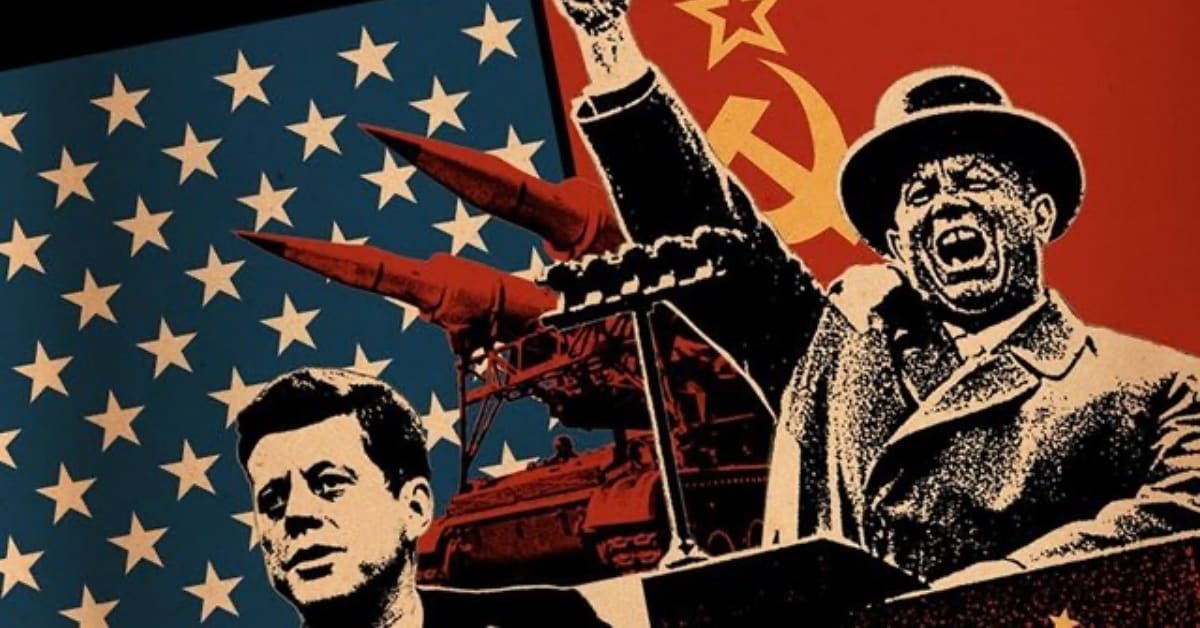
Disillusionment in Russia
Russia slowly abandoned its post-Cold War illusions. Naively, its political elites believed that conversion to capitalism would make Russia accepted by the West. They bitterly learned that Russia was only considered as a vassal expected to obey. In the 1990s, unbridled capitalism reduced Russians to pauperism and to such poverty that they were forced to sell their shoes on the sidewalks in the hope of finding something to eat. The “liberal” state was only a façade for the absence of a state, replaced by a jungle of oligarchs, organized crime, and foreign capital. Imitation of the West and integration into an American-centric globalization lost their appeal.
It was these strategic, political, and socio-economic disasters that had to be overcome, and it was his ability to do so that explains the emergence of Putin. He was, originally, a Westernizer like the other post-Soviet leaders but, like millions of Russians, he had to face the tragedy of his country’s decomposition. His whole policy was to restore the state and put Russia back on its feet.
His success at all levels earned him his well-known popularity in Russia, as well as generating a deep, visceral, Pavlovian hatred from US imperialists who cannot put up with countries capable of defending their sovereign interests, even less when they are large countries against which the use of military means is hazardous. From their standpoint, drunken Yeltsin’s weak, easy-to-exploit Russia was preferable.
Alarmed by NATO’s advance, Russia increasingly appealed to the West to heed its concerns, to take into account its security needs, instead of continuing a dangerous expansion, and to think in terms of global security for all. In February 2007, Putin made a famous speech in Munich insisting on state sovereignty, criticizing US unilateralism, and emphasizing international law which was being flouted by the “only superpower”. Nothing changed.
The United States was in a hubris of power, viewing itself as an “exceptional” and “indispensable” country, believing in the “end of history”, favoring steamroller globalization, and celebrating the disappearance of States (except the United States). American authorities saw Russia as a negligible quantity to be pushed into a corner.
Advancing inexorably, intervening everywhere, the United States included the entire world in its planetary imperialism. Russia was just one piece among many. Elsewhere, multiple operations of an expansionist nature were taking place without interruption under various pretexts (“war on terrorism”, “defense of human rights and democracy”, a crusade against a demonized leader, etc.)
War breaks out between Russia and Georgia.
Russia Reacts
The tide began to turn in 2008 on two grounds. First, an economic crisis of the first order destroyed the myth of a happy globalization and the benefits of American hegemony. It was in the United States that the crisis began and it affected the whole world. At the same time, the partially or fully controlled economies of China and several countries in the South continued to grow.
Discredit befell on the neoliberal model. Secondly, at the geostrategic level, Russia reacted militarily for the first time when its troops were attacked by the Georgia government born of the color “revolution” of 2003. This intervention was Russia’s first real reaction after years of paralysis in the face of international bullying. The rout of Georgian forces signaled Russia’s determination to protect its borders and put a stop to NATO expansionary projects.
Even so, Russia was not hostile to the West. It continued to appeal to reason and to the sense of collective interest, so much so that one could have wondered if Russian authorities were conscious of the intensity of Western hostility. Russia practiced a classic form of diplomacy coming from another era, taking place between diplomats, far from Western-style demagogic public relations spins, gutter sensationalism, and media hype, while being reviled and dragged through the mud by its interlocutors on all possible occasions and all matters. Foreign Minister Lavrov spoke of “our Western partners”, as they were stigmatizing his country. This was probably a residue of the 1990 hopes of joining the West by being conciliatory.
In contact with the reality of Western attitudes and policies, Russia progressively emancipates itself from its Western daydreams. It would never be accepted because its size made it hard to subordinate, and its refusal to give up its sovereignty challenged unipolarity, as well as setting an example for others who felt like her. Enmity towards Russia had been evident since 1990, but it was at the beginning of 2010 and in a roundabout way that the current phase began, leading to a military confrontation in Ukraine.
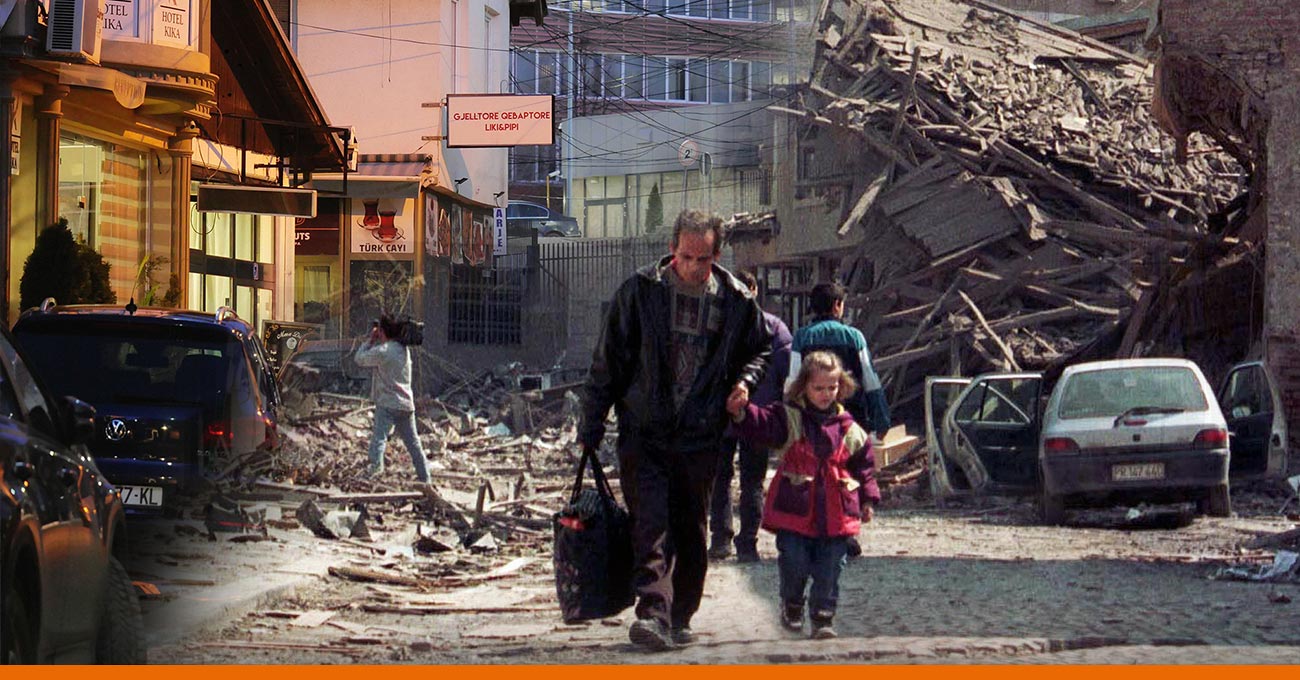
NATO attacks Serbia.
Opening of the Southern Front
Russia was still on the defensive. Pressured by NATO in the West, it was humiliated by NATO’s attack against Serbia in 1999 without even the cover of a UN mandate (a Russian veto was feared because Serbia was a Russian ally since the 19th century). In any case, omnipotence does not bother with authorizations in the unipolar world. Witness to the occupation of Afghanistan in 2001 by the United States, Russia saw new dangers appear in its environment.
The model of “colored revolutions” increasingly assumed militarized forms. Taking advantage of the Arab revolts of 2011, the United States and NATO increasingly favored regime changes in those Arab countries that escaped their control. A direct military attack took place in Libya following the abuse of the mandate granted by the Security Council. Russia voted like the other members for a mandate to protect the population, but NATO transformed it into the overthrow of the regime by force and the assassination of the head of state. For Russia, this was an eye-opener and it henceforth resolved to no longer be used to provide legal cover for Western interventions.
2014: From Syria to Ukraine
The war launched in 2011 by a Western coalition (United States, Great Britain, France, Turkey, Saudi Arabia, Qatar, and Israel) for regime change in Syria led to the conflict in Ukraine. Russia was directly concerned. First, the coalition targeted Syria, a Russian ally, just as it did Serbia in 1999 and Libya earlier in 2011.
This time, Russia and China used their vetoes to prevent the Security Council from approving a Western bombing campaign against Syria. The war proceeded anyway. Following its failure to control Iraq, which it had occupied since 2003, and the losses it had suffered, the United States chose to wage wars by proxy, sending whatever surrogates were available to fight. In Syria, the mission was entrusted to jihadists.
The model was the one used against Russia in Chechnya during the 1990s. Letting jihadists take over Damascus was a crazy gambit that would set fire to the entire region, that is, the southern edge of Russia. The chaos would then spread to Russia itself through the manipulation of its Muslim populations, repeating the Chechen War. Unable to win, the jihadists called for aerial bombardments from their American, British, and French sponsors.
In 2013, they staged a false flag chemical attack to provoke it. Neoconservatives are the most enthusiastic supporters of regime changes and invasions-occupations everywhere, including Syria. However, since the American public had gotten its fingers burned by the costly fiasco in Iraq, Obama procrastinated and ended up abstaining in August-September 2013. Putin helped him by offering him a way out. Furious that Putin had deprived them of such a good opportunity, the neocons swore revenge. On November 21, 2013, the Maidan protests began in Kiev.
Since the anti-Russian chaos could not be spread from Syria, they brought it closer by lighting the fuse at Russia’s very doorstep. From peripheral and distant menacing, they moved on to a direct threat. The policy of encircling Russia from the West and in the Balkans would be complemented by a southern component. The link between Syria and Ukraine was clear, as was the target: Russia.
Victoria Nuland hands out food to Ukrainians during anti-Russian coup.
The 2014 Coup and the Confrontation Phase
Following the well-established recipe of “color revolutions”, agitators from the Right Sector group made the demonstrations deviate towards violence. Blood has to flow to launch the call for the overthrow of a “regime that kills its people”. Unidentified snipers, particularly those that were located at the Ukraina Hotel, shot down both demonstrators and law enforcement officers, inciting them to kill each other.
The Franco-German-Polish agreement of February 21, 2014 with Ukrainian President Viktor Yanukovych that was meant to secure a peaceful transition of power was sabotaged a few hours later by the United States with the help of Banderist neo-Nazis, the equivalent in Ukraine of the jihadists of Syria.
On February 22, an elected government was overthrown by a coup d’état putting in power Russophobic ultranationalists supported by the Banderists. Representing the US government in Kiev, Victoria Nuland herself selected the members of the new Ukrainian government born of the putsch. She would later reveal that organizing the Maidan coup cost the US $5 billion. The plan for Ukraine’s entry into NATO was on track and becoming an imminent danger for Russia. The NATO spokesmen repeated that it would be implemented. The turn towards armed conflict was taken in 2014. The rest was just preparations and mobilization of resources.
The far-right militias, at the center of which was the Azov group, had a free hand and would subsequently even be integrated into the Ukrainian army. The internal war against Ukrainian Russian speakers immediately began, marked by a massacre in Odessa on May 2, 2014, the ban on the Russian language and an armed conflict against the oblasts of the Donbass which resisted derussification and fought for secession. Civilians were the first to pay the price. Between 2014 and 2022, more than 14,000 would lose their lives in daily bombings.
Russian speakers wished unification with Russia, but the latter’s priority was its security. It annexed Crimea, which was largely Russian-speaking and pro-reunification, to keep the Sevastopol naval base. Anarchy in Ukraine was not in its interest. The administration of this vast country suffering from serious ills would be a Pandora’s box, a nightmare from which it wanted to be spared. Russia preferred to maintain the Ukrainian state and did not recognize the breakaway republics of Donetsk and Lugansk.
It strove to find a solution that would protect the rights of Russian speakers (language, administrative autonomy) without removing them from Ukraine. The Minsk I (September 2014) and Minsk II (February 2015) agreements were neutralized by the Western signatories who later admitted having signed them only to give themselves time to arm and train the Ukrainian forces.
2021-2022: Outbreak of Armed Conflict
In 2021, the election of Biden also meant the political comeback of the neocons. Western military maneuvers around Russia, bomber overflights on its border, and naval clashes near the Russian coast in the Black Sea signaled the activation of the Ukrainian front and the transition to an offensive strategy. The Ukrainian army was now ready to launch the assault on the Donbass and confront Russia militarily. In 2021, Zelensky expressed his desire to acquire nuclear weapons.
At the end of 2021, Russia changed its tone when compared to the reserve of the years 1990-2021. It opposed a categorical refusal to the inclusion of Ukraine into NATO since this would be followed by the installation of American missiles on its southern flank. It submitted security treaties for the whole of Europe, ready to be signed. The rejection of the proposal by the West meant that Russia had no right to security, confirmation of the entire policy followed since 1990.
This multilateral agreement based on international law was rejected. It should be remembered that in a 2019 report (“Extending Russia”), the Rand Corporation recommended escalating pressures against Russia that would force it to respond in self-defense with a military operation in Ukraine. This would enable the United States to destroy Russia economically through “sanctions”, in addition to its exclusion from the Swift system and the disruption of gas exports to Europe. The scenario was followed by a letter by the United States.
At the start of 2022, all the prerequisites were in place for Russia to act by itself to ensure its security by forcing Ukraine to renounce NATO membership and by stopping the massacre of civilians in the Donbass. February 24, 2022, was not the beginning of a war with Ukraine but the last stage of the war that had begun in 2014. It was not the result of Putin’s evil spirit. It was written into Western policy towards Russia since 1990, and especially since 2014. The United States was fighting Russia through Ukrainians, a caricature of what proxy wars are.
The 2022-2024 phase is the best known. Wars rarely go as planned. Russia was considering a light intervention (a “special military operation”), not a war as such and certainly not the conquest of Ukraine. Its sole purpose was to sign a treaty to neutralize Ukraine. The main issue that mattered for Russia was that its neighbor not be hostile and not put its territory at the disposal of Russia’s Western enemies. However, Western partners were determined to throw the Ukrainians into combat.
Taking their wishes for reality, they calculated that Russia would collapse economically and convinced themselves that its military forces were weak. However, Russia did better than before the “sanctions”. It turned out that it possessed weapons in unsuspected quantity and quality. If the Russian plan was optimistic, the Western one was fanciful.
There would therefore be a “high intensity” war, not with the expectation that Ukraine could prevail militarily against Russia, but in the hope of provoking a “color revolution” in Moscow, whatever the cost in Ukrainian blood. Hot war remains in the policy in the West on this 10th anniversary, despite the uninterrupted series of Kiev’s defeats, the destruction of Western weapons on the battlefield, and the battered state of Ukraine, all revealing the manifest failure of the entire strategy.
Used as a disposable tool by the United States and NATO against Russia, Ukraine is in ruins and its future is in jeopardy. The rational path of a diplomatic resolution is not considered because the real issues are global and way beyond Ukraine itself.
Samir Saul holds a doctorate in history from the University of Paris and is a professor of history at the Université de Montréal. His latest book is L’Impérialisme, passé et présent. Un essai (2023). He is also the author of Intérêts économiques français et décolonisation de l’Afrique du Nord (1945-1962) (2016), and La France et l’Égypte de 1882 à 1914. Intérêts économiques et implications politiques (1997). He is also co-editor of Méditerranée, Moyen-Orient : deux siècles de relations internationales (2003).
